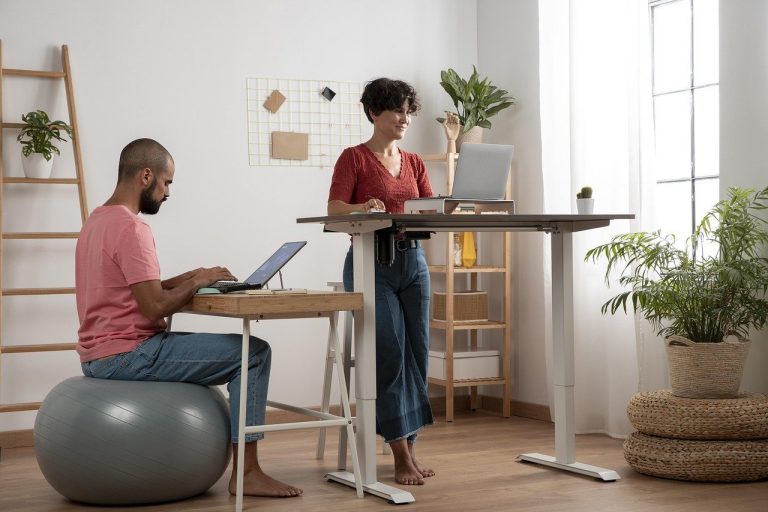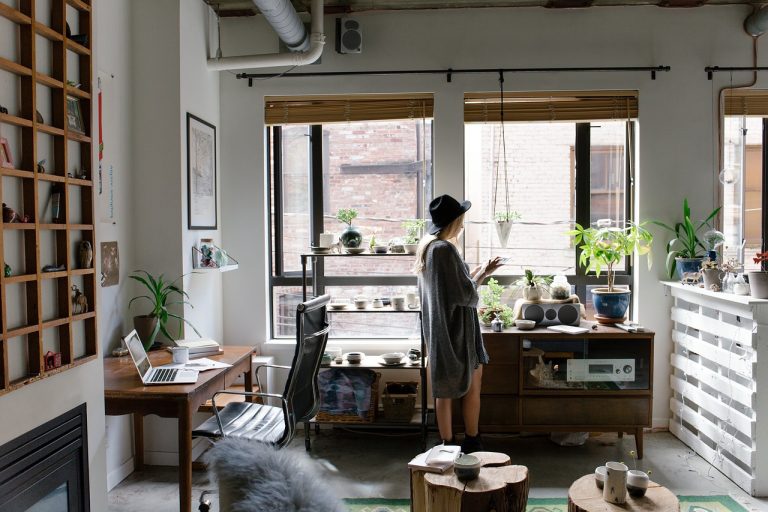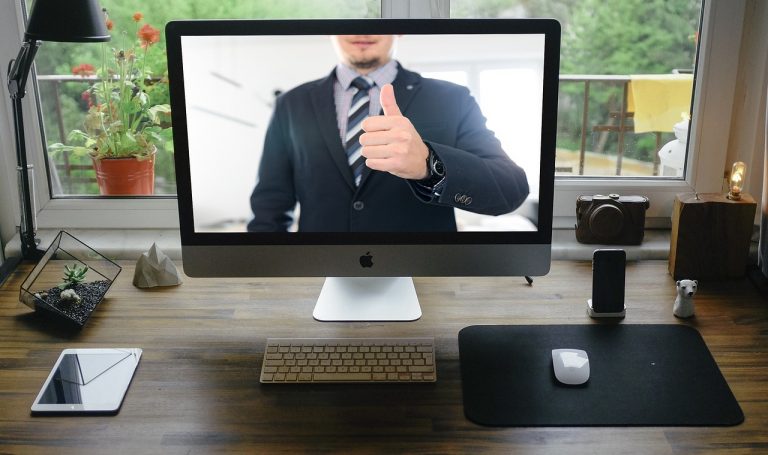Space-Efficient Home Office Layouts for Shared Living: Tips and Ideas
Space-efficient home office layouts are essential for shared living situations, where multiple people need to work in the same space.
Designing a home office that maximizes productivity and privacy while also being aesthetically pleasing can be a challenge.
However, with careful planning and a few clever tricks, it is possible to create a functional and comfortable workspace that meets everyone’s needs.
When designing a home office for shared living situations, it is important to consider the specific needs of each individual.
Some people may require more privacy than others, while others may need more space to spread out their work.
Maximizing space in shared areas is also critical, as it can be challenging to find enough room for everyone to work comfortably.
Additionally, aesthetic considerations are important as a pleasant working environment can boost productivity and reduce stress.
Designing for Productivity and Privacy
When designing a space-efficient home office for shared living situations, it is important to consider both productivity and privacy.
Optimizing Desk Placement and Office Setup
The desk is the centerpiece of any home office, and its placement can have a significant impact on productivity.
Ideally, the desk should be positioned near a window to allow for natural light and fresh air.
Additionally, the desk should be placed in a way that minimizes distractions and maximizes privacy.
For example, it may be beneficial to position the desk facing away from high-traffic areas or to use a privacy screen to create a barrier between the workspace and the rest of the room.
Incorporating Effective Lighting and Window Treatments
Lighting is another important consideration when designing a home office.
Task lighting, such as a desk lamp, can help reduce eye strain and improve focus.
Additionally, window treatments such as blinds or curtains can help control the amount of natural light entering the space, which can be especially important for those who work with computers or other electronic devices.
Selecting Furniture for Functionality and Focus
When selecting furniture for a home office, it is important to prioritize functionality and focus.
For example, a comfortable chair with good lumbar support can help reduce back pain and improve posture, which can in turn boost productivity.
Additionally, storage solutions such as shelving or filing cabinets can help keep the workspace organized and free of clutter.
Maximizing Space in Shared Areas
When it comes to shared living situations, maximizing space is essential. This is particularly true when it comes to home office layouts.
Fortunately, there are many ways to make the most of limited space. Here are a few tips for space-efficient home office layouts in shared living areas.
Utilizing Vertical Space and Multi-Function Pieces
One of the best ways to maximize space is by utilizing vertical space.
This means using shelves, cabinets, and other storage solutions that go up the wall instead of taking up floor space.
For example, a tall shelving unit can provide ample storage for books, office supplies, and other items, while taking up minimal floor space.
Another way to maximize space is by using multi-function pieces.
For example, a desk can double as a dining table or a console table. A rolling file cabinet can also be used as a side table or an end table.
By using multi-function pieces, you can make the most of limited space while still having all the functionality you need.
Creative Solutions for Underutilized Spaces
Another way to maximize space is by getting creative with underutilized spaces.
For example, under the stairs can be turned into a cozy home office nook. A closet can be converted into a compact home office with a desk, chair, and shelving.
Floating shelves can also be used to create a home office in an unused corner of a room. By installing floating shelves, you can create a functional workspace without taking up any floor space.
Aesthetic Considerations for a Pleasant Working Environment
When designing a space-efficient home office for shared living situations, it’s important to consider the aesthetics of the space to create a pleasant working environment. This section will cover the aesthetic considerations that can help create a harmonious and productive workspace.
Choosing a Harmonious Color Palette and Decor
The color palette and decor of a home office can have a significant impact on the overall aesthetic of the space.
When selecting a color palette, it’s important to choose colors that promote productivity and focus.
Neutral colors such as white, beige, and gray are great options for creating a calm and serene environment. However, pops of color can also be incorporated to add personality and energy to the space.
In addition to the color palette, decor elements such as wall art, artwork, and decorative accents can also help create a harmonious and aesthetically pleasing environment.
When selecting decor elements, it’s important to choose items that are cohesive with the overall style and theme of the space.
Incorporating Greenery and Personal Touches
Incorporating greenery and personal touches can help create a more inviting and personalized workspace.
Houseplants are a great way to add natural beauty to the space. They also improve air quality and reduce stress levels. Popular options include succulents, snake plants, and pothos.
Personal touches such as family photos, artwork, and mementos can also help create a more personalized and inviting workspace.
These items can provide inspiration and motivation while also adding a touch of personality to the space.
When designing a space-efficient home office for shared living situations, it’s important to consider the aesthetics of the space to create a harmonious and productive workspace.
By selecting a harmonious color palette and decor and incorporating greenery and personal touches, it’s possible to create a space that is both functional and aesthetically pleasing.







